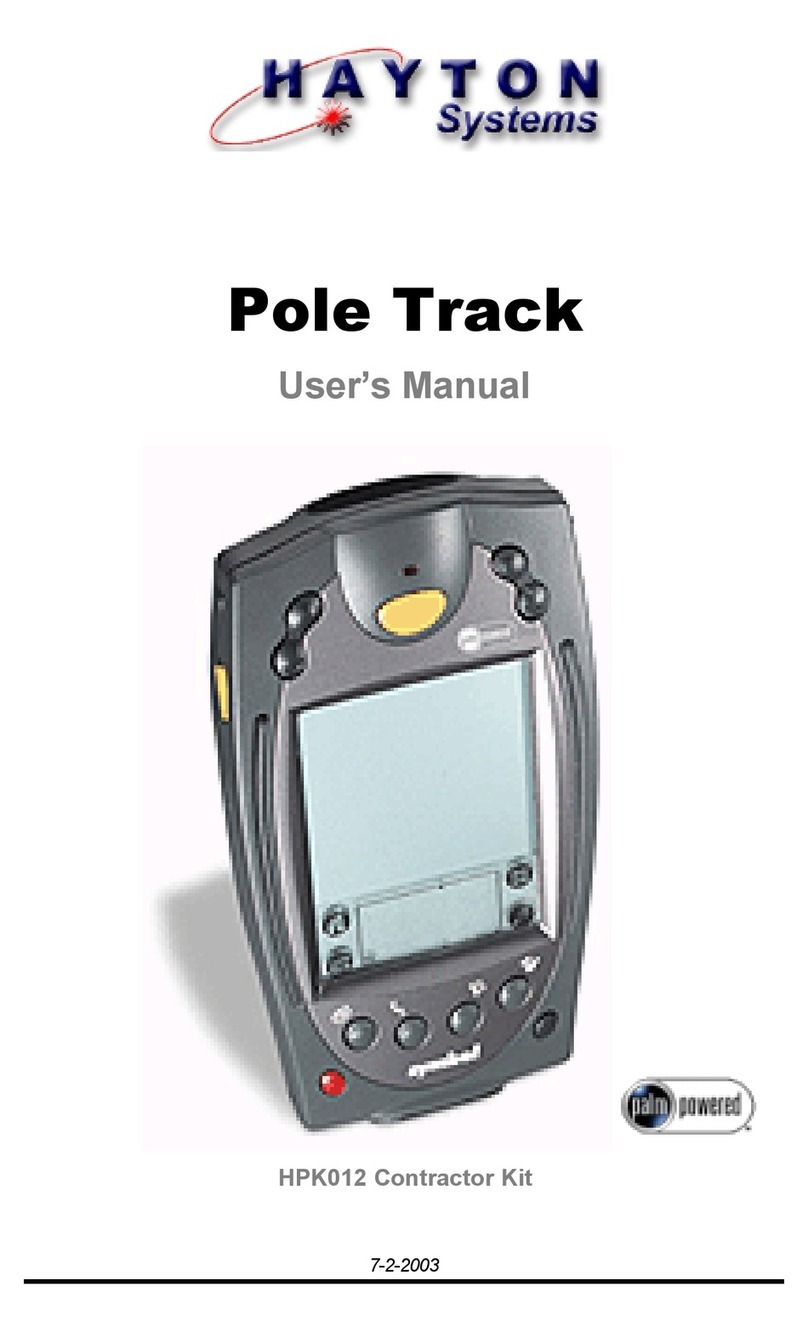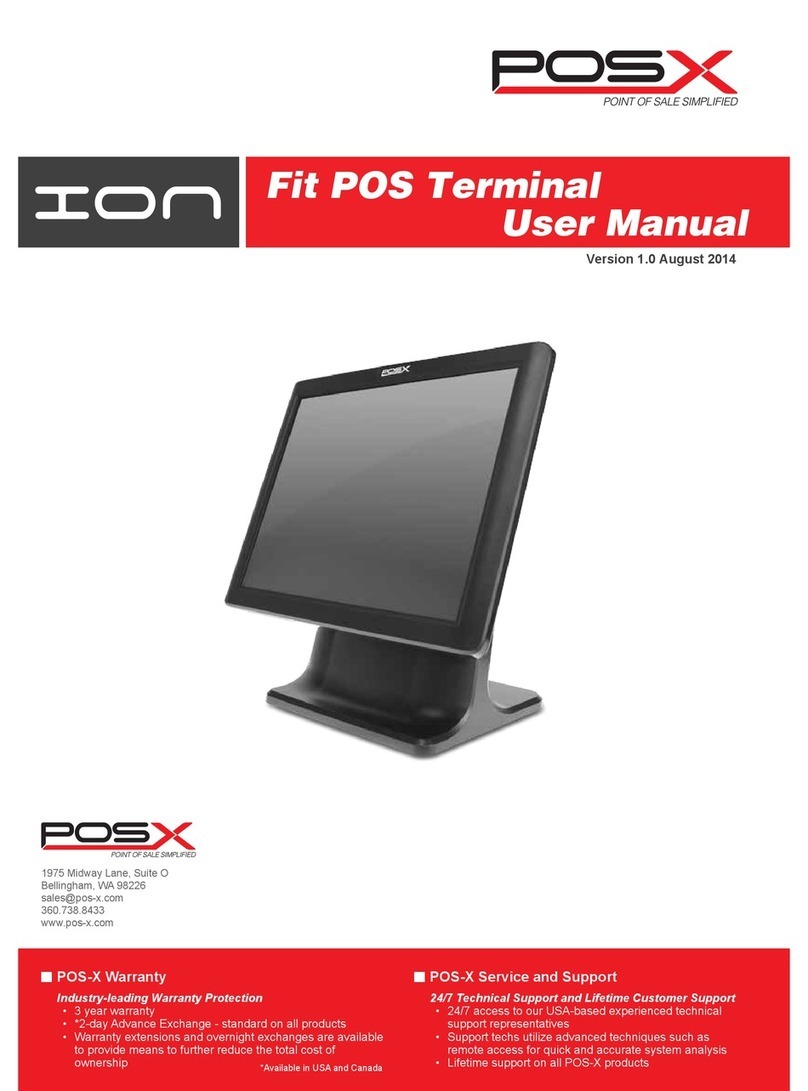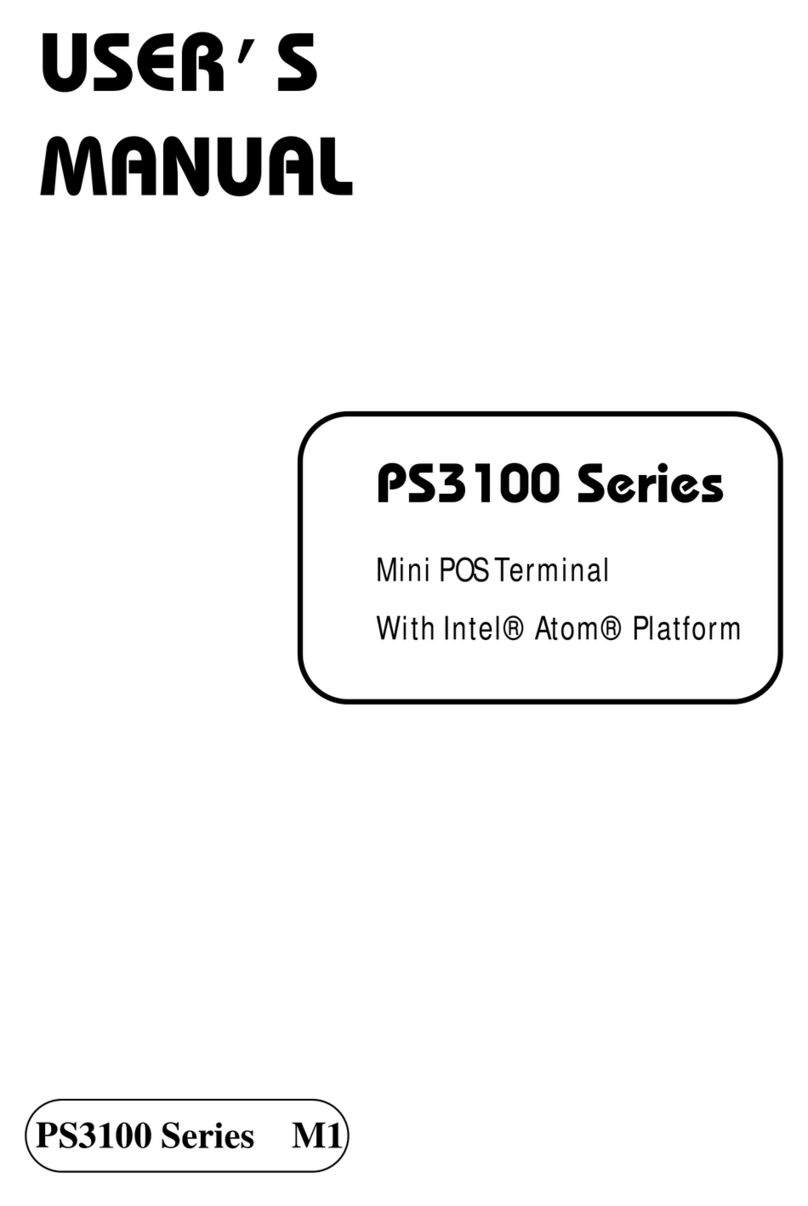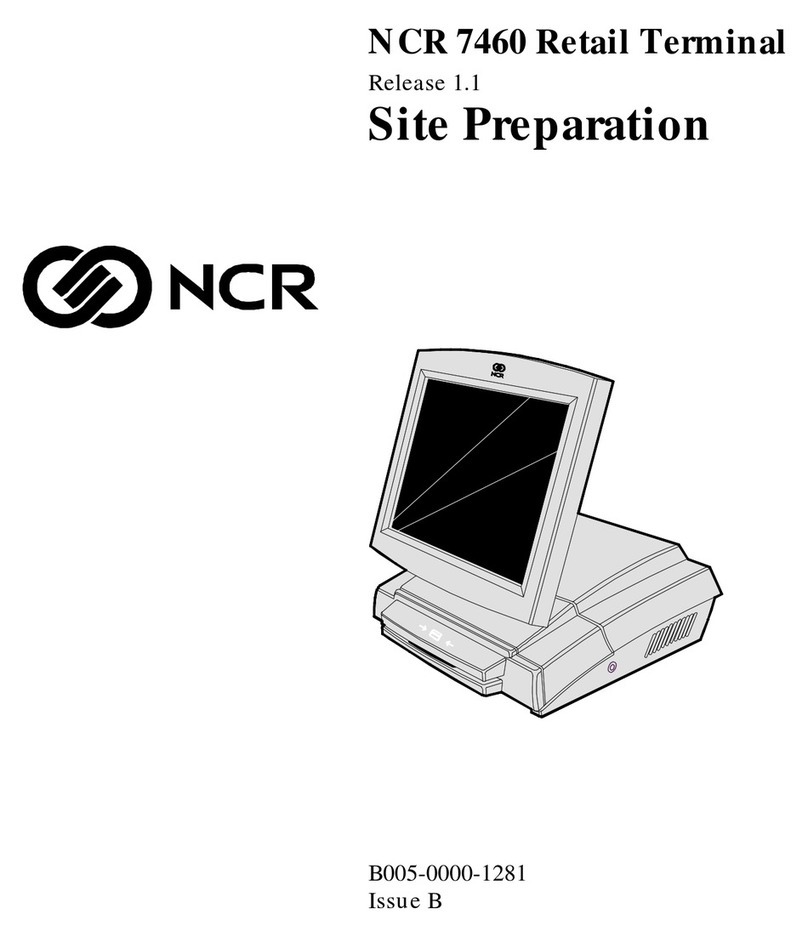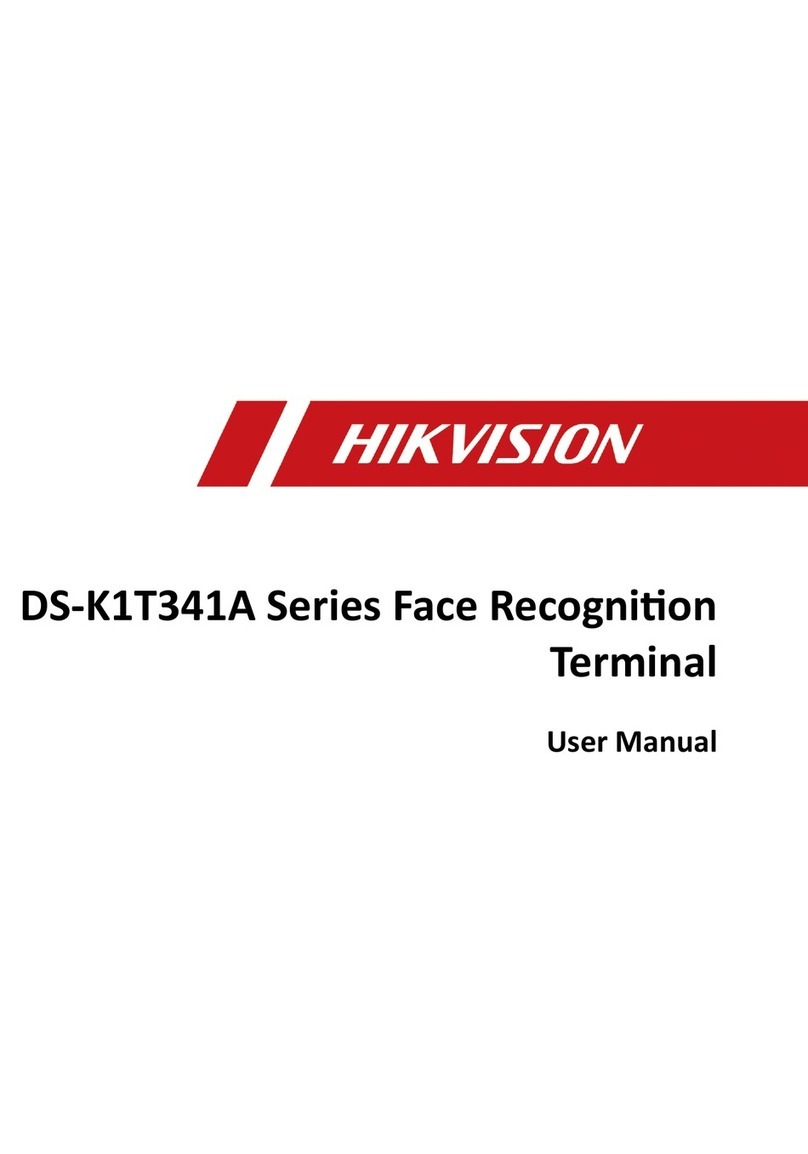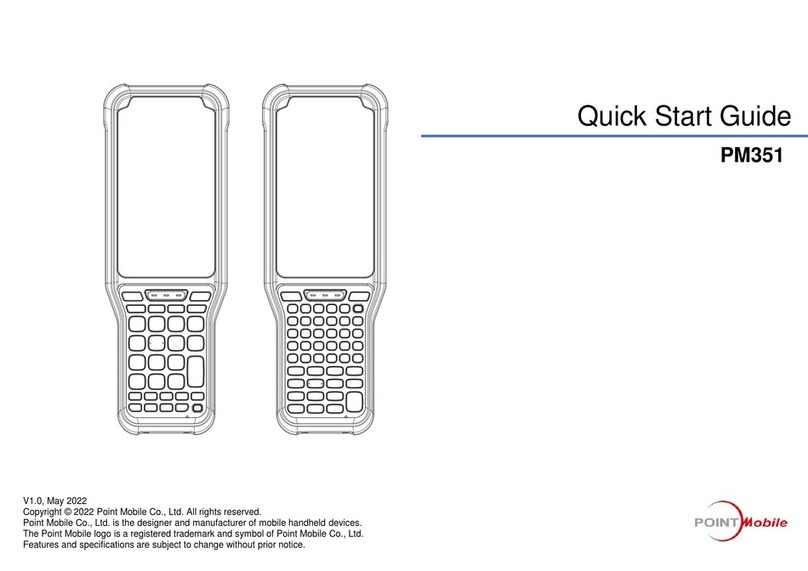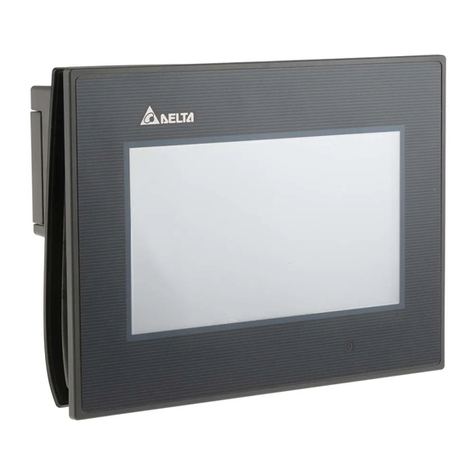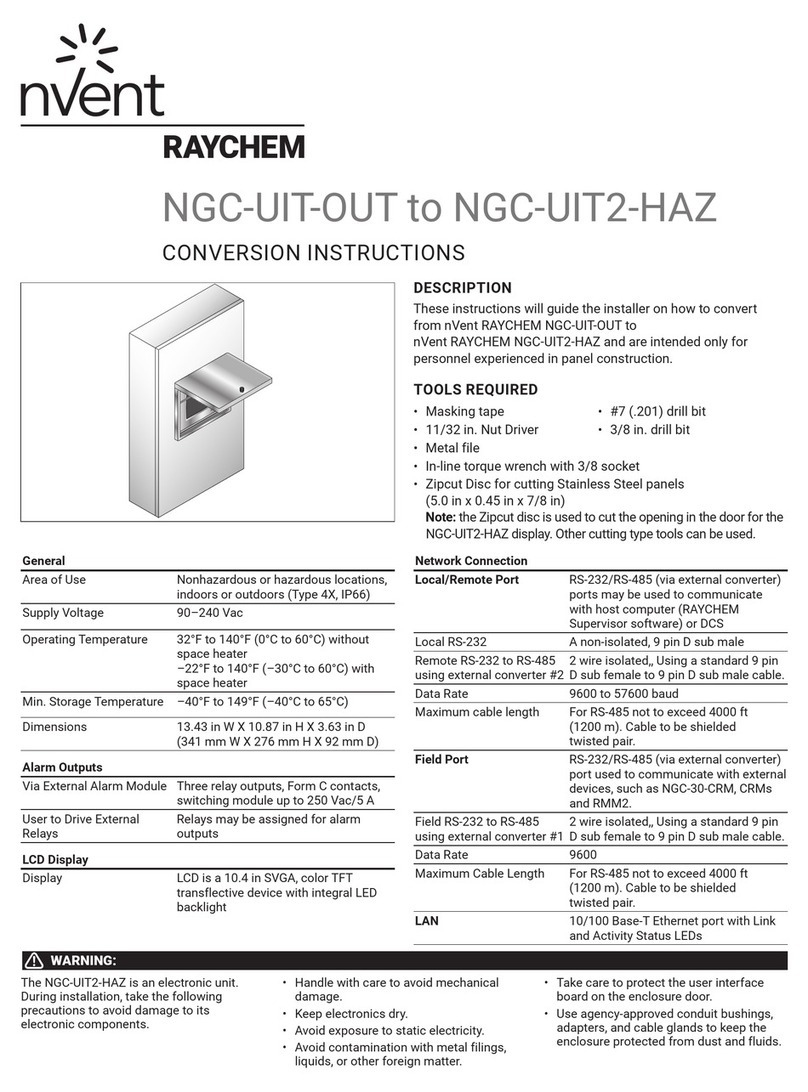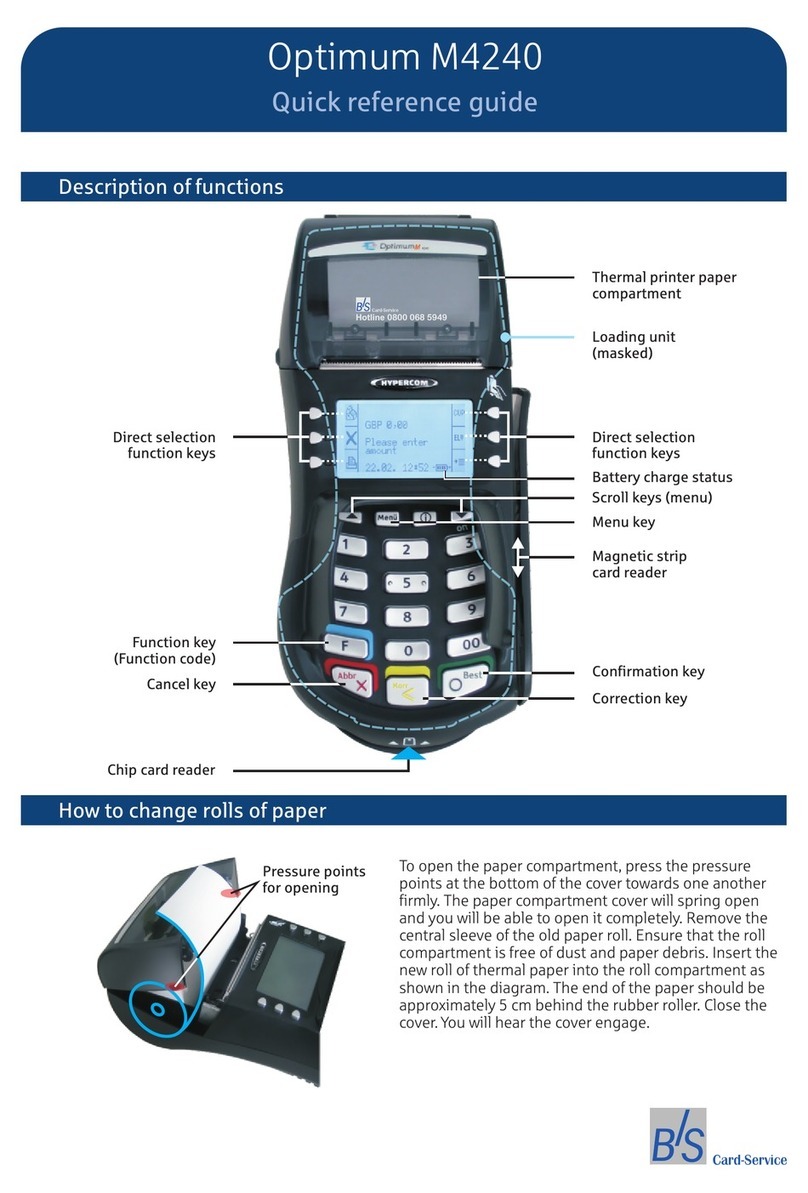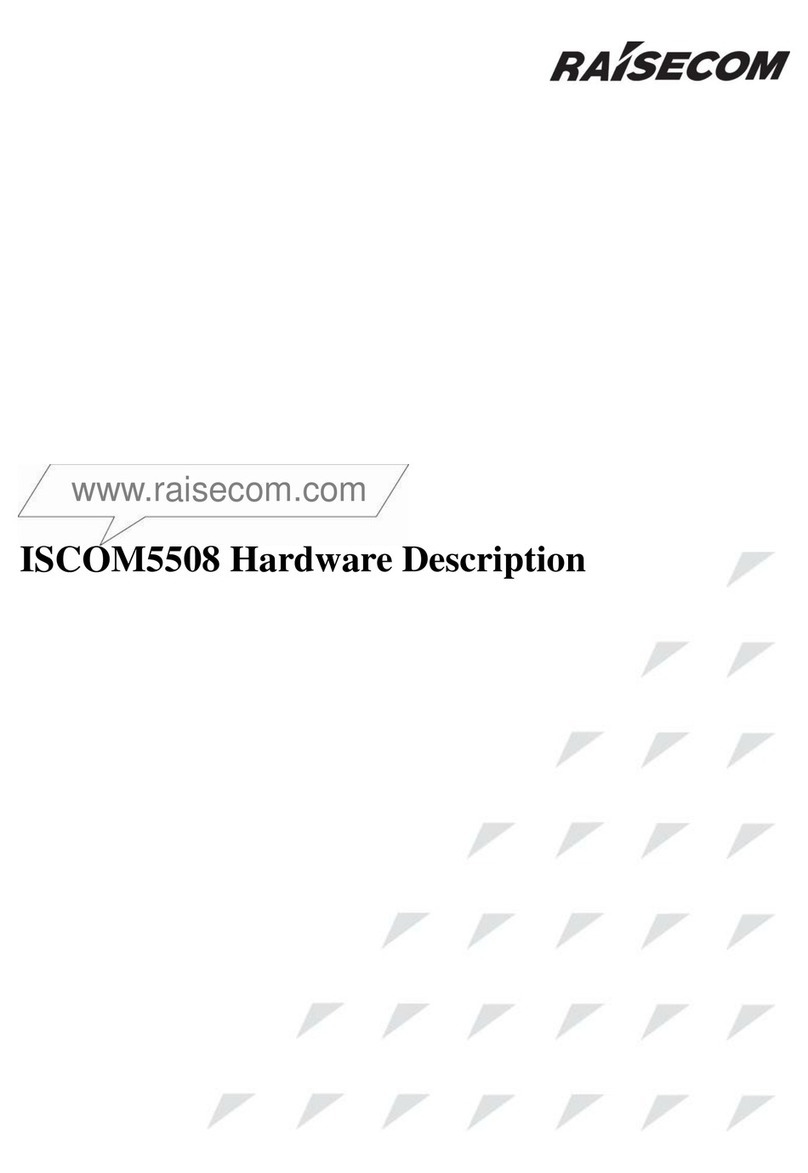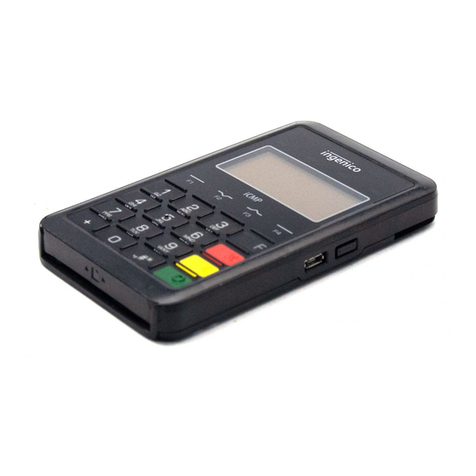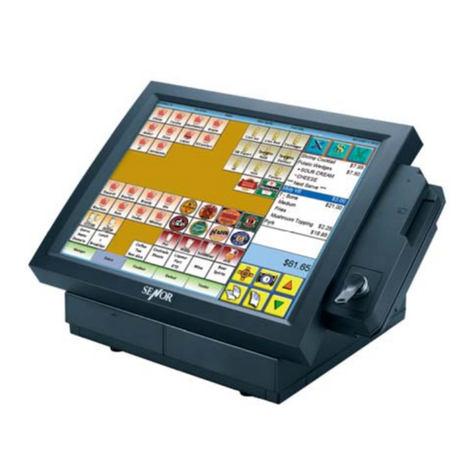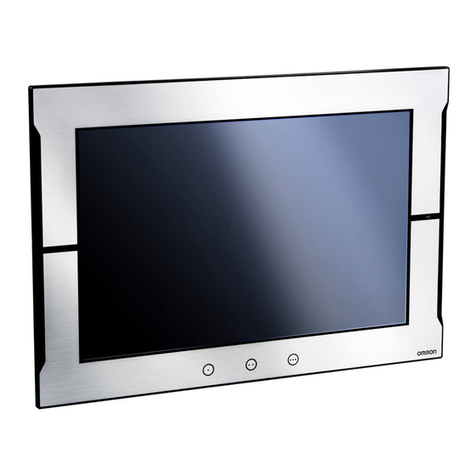Cromemco 3100 User manual

Crorneineo
3100
&
3101
TERMINAL
Part
no.
023-0077
SERVICE
MANUAL
CROMEMCO,
Inc.
280
Bernardo
Avenue
Mountain
View.
CA
94043
March
1980

This
document
has
been
prepared
by
Beehive
International
and
is
furnished
on
the
condition
that
it
will
be
used
by
tha
customer
solely
for
the
purpose
of
supporting
the
operation,
service
and
maintenance
of
Beehive
products.
The
rights
of
the
customer
with
respect
to
this
document
will
be
governed
by
mutually
acceptable
provisions
of
the
contract
with
Beehive
International.
This
document
shall
not
be
duplicated
by
the
customer,
nor
released, disclosed
or
used, in
whole
or
in
part,
for
any
purpose
other
than
stated
herein,
without
the express
written
permission
of
said Beehive
International.

Section
4.1
4.2
4.2.1
4.2.2
4.2.3
4.2.4
4.3
4.3.1
4.3.2
4.3.3
4.3.4
4.3.5
4.3.6
4.3.7
4.3,8
4.3.9
4.3.10
4.3.11
4.3.12
4.3.13
4.3.14
4.3.15
4.3.16
5.1
5.2
5.2.1
5.3
5.3.1
5.3.2
5.3.3
5.4
5.5
5.5.1
5.5.2
5.5.3
5.5.4
5.5.5
8150
MAINTENANCE
MANUAL
TABLE
OF CONTENTS
Title
SECTION
IV
-
THEORY
OF OPERATION
INTRODUCTION
GENERAL
FUNCTION DESCRIPTION
Power Supply .
Monitor
Keyboard.
Logic Board.
DETAILED
FUNCTIONAL
DESCRIPTION
Power Supply .
Monitor
Vertical Synchornization. .
Horizont.al Synchronization
Video Information .
Keyboard.
Display Organization
Cursor Location Counter
Memory
Character Generator
Video
Shift
Register
Input/Output
Operations UART (Receiver) .
UART (Transmit) .
Block
Send
Circuit .
Auxiliary
Send
Circuit
Special Function (F1-F16)
SECTION V -
MAINTENANCE
INTRODUCTION
PREVENTIVE
MAINTENANCE.
Troubleshooting Equipment
CORRECTIVE
MAINTENANCE
Troubleshooting Preliminary Considerations.
Troubleshooting
Flow
Diagrams .
Full/Duplex Echoplex
Test.
MONITOR ADJUSTMENTS
DISASSEMBLY PROCEDURE
Case
Removal .
Logic Board Removal .
Keyboard Assembly.
Fan
Removal
Monitor
Assembly Removal.
iii
Page
4-1
4-1
4-1
4-1
4-1
4-1
4-6
4-6
"4-6
4-6
4-6
4-6
4-6
4-6
4-7
4-11
4-11
4-11
4-11
4-11
4-11
4-12
4-12
5-1
5-1
5-1
5-1
5-2
5-2
5-2
5-17
5-18
5-18
5-18
5-18
5-18
5-18

Section
Title
Page
SECTION
VI
-DRAWINGS/SCHEMATICS
APPENDICES
A MONITOR
1 General Information A-1
2 Theory
of
Operation
A-1
3 Preliminary Adjustments . A-6
4 Troubleshooting and Maintenance A-9
B GLOSSARY
c PROGRAMMABLE LOGIC
ARRAY
INPUTS
TABLES
Table Description
Page
5-1
Troubleshooting
Flow
Diagram. Index. . . .
5-3
ff
FIGURES
Figure Description
Page
4-1
Basic
Block Diagram 4-2
4-2
Basic
Functional Flow Diagram
4-3
4-3
Basic
Functional Flow Diagram 4-4
4-4 Power Supply Block Diagram . 4-5
4-5
Character
Dot
Matrix
4-8
4-6
Timing Diagram 4-9
4-7
Timing Diagram 4-10
5-1
Echoplex Test Connector
5-2
5-2
Monitor
Adjustments
5-17
5-3
Assembly Drawing
5-19
A-1
Voltage Waveform A-10
A-2 Interconnecting Cabling Diagram
A-11
A-3 Circuit Board Components Location A-11
A-4 TV5, 9 and
12
Without
Power Supply A-12
iv

SECTION
IV
Theory
of
Operation
4.1
INTRODUCTION
This section
contains
the
theory
of
operation
for
the
BEEHIVE
8150
Terminal. This discussion
is
presented
as
a functional description
at
a detailed
block diagram level referencing
appropriate
func-
tional blocks
on
the
diagrams.
4.2
GENERAL FUNCTIONAL DESCRIPTION
The
B
150
consists
of
four
basic functional
compo-
nents, Power Supply, Mani
tor,
Keyboard
and Main Logic Board. Figure
4-3
shows
the
basic
functional flow diagram
of
the
terminal. These
functions
are briefly described
in
the
following
paragraphs.
4.2.1 Power
Supply
The Power
Supply
provides
the
required, regula-
ted
DC
voltages
to
the
terminal. This assembly
will
operate
on
100, 115,
or
230
V
AC
50/60
Hz
power (see Section
II).
·
4.2.2
Monitor
The Monitor Assembly includes a 12 inch (30.5
cm). diagonally measured,
CRT
and its
support-
ing solid-state circuitry.
The
Monitor
is
controlled
by
the
vertical
and
horizontal
synchronization
sig-
nals, and the video signals generated on
the
logic
board. A full screen
of
information
consists
of
24
4-1
lines
of
80
characters and a
one
raster scan
bet·
ween lines. Brightness and
contrast
adjustments
ai-e
provided by external
potentiometers
located
on
the
rear panel, (see Figure
2-2,
Se~tion
11
).
Other
monitor
adjustments are discussed
in
Section V and in Appendix
A-.
4.2.3 Keyboard
The
keyboard
is
the
input
device used
by
the
opera-
tor
to
communicate
with
the
terminal. The key-
board
contains
the switches and
supporting
circuitry
to
generate
the
appropriate
control
signals and
ASCII codes utilized
in
the
B
150
terminal.
The
key-
board
conforms
to
the
proposed ANSI
keyboard
standard
for
data
keys,
but
has been
expanded
to
facilitate
the
capabilities
of
the
8150.
4.2.4 Logic Board
The
Logic Board contains
the
major function and
control circuits in
the
B150 termina. It also
holds all
of
the
DC
voltage regulators
to
power
the
unit, with
the
exception
of
the
+5 V regulator.
The
basic operations accomplished by
the
main
logic board are: Generation
of
data
a!1d
control
signal~
for
the
monitor,
interaction with
the
key-
board,
control
of
the
data
sent
between
the
B
150
and any external device, and generation
of
the
basic timing signals essential for
the
operation
of
the
terminal.

VllJl::O
L:UH.'>0)1
~~~~~~
liENEAATION
Ul'UftL
HUH"Ef!E:O
TORli!:MOTE
r.~~=-"'\..---
MONJTOR
VIUSD
CURSOR
"DFF
SCffEiSN"
CIRCUIT
CHC
KBYEIOA.ftD
CONTROL
WCilC
Figure 4-1 BASIC BLOCK DIAGRAM
FROM
KEYBOARD

"-<V'''
~<?'''
"-<?''"
N
H C U
\ y
~
GO
TO
"LF"
GO
TO
"ADV"
r;o
TO
"llKSP"
Figure 4-2 BASIC FUNCTIONAL FLOW
DIAGRAM
au
TO
"flTN cunson"

Figure 4-3 BASIC
FUNCTIONAL
FLOW
DIAGRAM

RECTIFIER
RECTIFIER
·"'
TRANSFORMER
"'
115/230vAC INPUT BLOCK
RECTIFIER
FIGURE
4-4
POWER
SUPPLY BLOCK
DIAGRAM
+5
v
REGULATOR
+15
REGULATOR
+12
REGULATOR
-12v
REGULATOR
+5vDC
+15
vDC
+12
voe·
-12
vDC

4.3
DETAILED FUNCTIONAL DESCRIPTION
A detailed discussion
of
the
BEE HIVE
8150
termi-
nal
operation
is
contained
in
the
following para-
graphs. The Subassembly
components
of
the
termi-
nal are functionally
interdependent,
however,
the
isolation
of
various functions
to
the
responsible
subassembly
is
relatively simple.
The
function
of
each subassembly
is
also described.
Schematic
diagrams are provided in Section
VI
of
this
manual.
4.3.1 Power Supply
The
Power
Supply
provides +5, +15, +12,
and
-12
voe voltages
to
the
circuitry from a
115
or
230
VAC source
at
50
or
60
Hz.
Figure 4-4
is
a
block
diagram
of
the
Power
Supply
subassembly.
The
DC
regulators utilized are overcurrent
and
ther-
mally
protected.
The
power
applied
to
the
Power Supply
is
step-
ped
down
in voltage.
The
transformer
output
voltages are rectified by
three
bridge circuits.
The
output
from
the
rectifiers
and
filters
pro-
vides
power
to
the
+5, +15, +12,
and-12
voe
regulator circuits.
4.3.2
Monitor
The
monitor
displays
data
on
the
CRT
in
a
pattern
determined
by
the
vertical
and
horizontal syn-
chronization
signals,
and
the
video
information
driving signals. A
+15
VDe
voltage
is
applied
by
the
Power
supply
to
the
Monitor.
Appendix
A
presents general
and
detailed
data
on
the
Moni-
tor
Assembly.
4.3.3
Vertical
Synchronization
Vertical
synchronization
is
applied
to
the
verti·
cal oscillator
and
triggers it
at
the
vertical
re-
fresh rate
determined
by
the
driving logic.
The
vertical frequency
is
stabilized by
the
vertical
frequency
control,
which
determines
the
point
of
oscillation.
The
output
pulse
of
the
vertical
oscillator
is
applied
to
the
driver amplifier
which shapes
the
pulse
and
is
controlled
by
the
vertical linearity
control.
The
output
of
the
driver amplifier
is
applied
to
the
vertical
driver by way
of
the
height
control.
The
verti-
cal driver
output
pulse
is
applied
to
the
yoke
of
the
CRT
and
causes vertical deflection.
The
refresh rate
is
50
-
60
Hz. switch selectable.
4-6
4.3.4
Horizontal
Synchronization
The
horizontal synchronization pulses are applied
to
the
horizontal amplifier where
they
are ampli-
fied and applied
to
the horizontal driver.
The
out-
put
of
the horizontal drive
is
applied through
the
width
coil
to
the
yoke, where
it
causes
the
horizon-
tal deflection.
The
horizontal deflection signal
is
also applied
to
the
flyback trano;former.
Tt-ie
hori-
zontal deflection signal
is
stepped
up
to
approxi-
mately 12
KV
where it
is
then
rectified, filtered
and applied
to
the
anode
cap
of
the
CRT
to
pro-
vide
the
high voltage required.
4.3.5
Video
Information
The
Video Information
is
applied
to
the
vick:o
amp·
lifier by
way
of
the
contrast
r.ontrol,
external
to
the
monitor.
The
video
information
siqnal
irom
the
video amplifier
is
appiied
to
the
cathode
of the
CRT
gun
to
cause
an
On/Off
condition
corresponding
to
light
patterns
of
the
screem.
The
brightness con-
trol
is
external
to
the
monitor
and
varies
the
vol-
tage
on
the
accelerating grid
of
the
CRT.
4.3.6
Keyboard
The
keyboard
is
compatible
with
ANSI
standards.
Section
111
defines
the
ASCII
codes
available
and
shows
the
keyboard
layout.
The
keyboard
enables
the
operator
to
manually
input
information
to
the
terminal. When a key
is
depressed,
the
keyboard
logic generates
the
corres-
ponding
7-bit
ASCII
code
and presents
the
c!ata
in parallel
form
to
the
keyboard
data
lines.
After
a
short
delay
for
debouncing,
the
strobe
is
driven
to
its active level and held
there
as
long
as
the
key
is
held
down.
For:
those keys which
auto
repeat,
the
strobe
line
is
pulsed
at
a 15
character
per
second
rate.
The
BREAK key
is
not
encoded.
but
is
a func-
tion
line
that
is
driven low for
approximately
400
millisee,onds when
the
key
is
depressed.The follow-
ing keys cause special
8-bit
(non-ASCII) codes:
AUX SEND, l ,--.,._,
t,
CLEAR/HOME.SEND,
EOS, EOL,
and
DELETE CHAR.
These
codes
are
used internal
to
the
CRT
only
and
are
not
transmitted.
4.3.
7 Display Organization
The
main timing
rhain
(oscillator,
dot
position
counter,
character
position
counter,
character
height
counter,
and
character
line cciunter)

defines
the
configuration
of
the
display
on
the
CAT.
There
are
27
lines, 3
of
which are used
for
vertical
retrace and
24
of
which are used
to
display charac·
ters.
The
27
lines are
composed
of
ten
scans each.
Each scan being
composed
of
7 x
10
dot
matrix
field which
contains
a 5 x 7
character
matrix
for
the
displayed character.
Oscillator
The
oscillator
is
crystal
controlled
with
a
frequency
of
10.8864
MHz.
Two
74H04's
are
connected
in series by a
100pf
capacitor.
Each
74H04
has a 1 Kohm feedback resistor
around
it.
A
10.8864
MHz crystal
is
connected
from
the
input
of
the
first
74H04
to
the
output
of
the
second.
The
output
of
the
oscillator
is
buffered,
inverted
and
fed
to
the
Dot
Position
Counter.
Dot
Position
Counter
This divide-by-seven coun-
ter
defines each
of
the
seven
dots
required
to
compose
one
character.
The
outputs
of
this
four
stage
counter
are labeled DPC1, DPC2, DPC4,
and DPC8.
The
Counter
actually presets
to
a
count
of
10,
counts
up through
the
overflow
point
at
15
to
a
count
of
zero,
and
presets
then
back
to
a
count
of
10.
The
Dot
Position coun-
ter
output,
DPC8, drives
the
Character Position
Counter.
Character Position
Counter
The
Character
Position
Counter
is
composed
of
two
binary-
type
counters
that
define
96
character
times,
each being seven
dots
wide.
The
output
of
the
Character Position
Counter
drives
the
Charac-
ter
Height
Counter.
Character Height
Counter
The
Character Height
Counter
is
a standard
counter
that
defines 10
scans
of
96 characters each,
with
each charac-
ter
being seven
dots
wide.
The
output
of
the
Character Height
Counter
drives
the
Character
Line Counter.
Character Line
Counter
The
Character
Line
Counter
is
a binary
counter
that
starts
at
a
count
of
zero
and
counts
to
a
maximum
of
26
for a total
of
27
character
lines.
The
final out-
put
of
this
counter
runs
at
the
vertical refresh
rate.
Horizontal
and
Vertical Drive
The
Horizontal
4-7
Drive is
started
when
the
Character Position Coun-
ter
leaves
the
video area
of
the
scan and
is
active
for
the
following
40
character
times.
The
high
active
output
of
this
flip-flop
is
sent
to
the
moni-
tor
on
pin 9
of
connector
J 1.
The
vertical drive
is
generated during
the
time
that
the
Character Line
Counter
is
decoding 24.
4.3.8
Cursor Location
Counter
The
Cursor Location
Counter
identifies
the
loca·
tion
of
the
cursor. This
is
a
count
made
from
the
Cursor Line
Counter,
called CURL, and
the
Cur-
sor Position
Counter,
called CURP. These
two
counters,
in
conjunction
with
the
ROLL
counter,
are used
to
address
the
memory
to
determine
the
entry
point
of
the
next
character.
The
cursor
loca-
tion
counters
are
compared
with
the
next
character.
The
cursor
location
counters
are
compared
with
the
Character Position
Counter
and
the
Character
Line
Counter
to
generate
the
signal called CNTR
CURSOR. This signal
is
used
to
generate
the
cur-
sor displayed
on
the
CRT. Also associated
with
the
cursor
location
counters
is
the
appropriate
circuitry
to
move
the
cursor
up,
down,
right, left,
home,etc.
A LINE FEED
code
causes
the
Cursor Line
Counter
to
increment
by one. A
CARRIAGE
RETURN
code
clears
the
Cursor Position
Counter.
With
the
terminal operating
in
FORMAT MODE,
when
the
cursor
is
incremented
off
the
bottom
line,
the
cursor
automatically
wraps
around
to
the
top
of
the
display, i.e;,
the
Cursor Line
Counter
is
reset
to
zero. However, if
the
terminal
is
not
in
FORMAT MODE,
the
display scrolls whenever
the
cursor
increments from a
count
of
23.
A scroll
is
initiated by any
of
3
functions
if act-
ivated when
the
cursor
is
on
the
last· I
in
e
of
the
display and
the
terminal
is
not
in FORMAT MODE:
a.
LINE
FEED
or
CTRL
J
b. CURSOR
DOWN
or
ESC B
c. If
the
cursor
is
on
the
last position
of
the
last line.
1.
Cursor right
2. Any displayable
character
3. Space

DOT ft
BLANK
DOT
0
rOTO
DOT S
ILANIC
CHARACTER
BLANK
CHARACTER
BLANK
L DISPLAY
,·
L
DISPLAY
'l
A. A
SCAN 0
ir.O
0 0 0 0 0 0 0 0 0 0 0 0 0
0 • 0 0 0 • 0 0 • • • • • 0
0 • 0 0 0 • 0 0 • 0 0 0 0 0
0 • 0 0 0 • 0 0 • 0 0 0 0 0
CHARACTER 0 • • • • • 0 0 • • • • 0 0
DISPLAY
0 • 0 0 0 • 0 0 • 0 0 0 0 0
0 • 0 0 0 • 0 0 • 0 0 0 0 0
0 • 0 0 0 • 0 0 • 0 0 0 0 0
SCAN
8
ir.O
0 0 0 0 0 0 0 0 0 0 0 0 0
-
SCAN 9
•0
• • •
•••
0 0 0 0 0 0 0 0
F'OR
CURSOR
SCAN 0
.o
0 0 0 0 0 0 0 0 0 0 0 0 0
0 • • • • • 0 0 • 0 0 0 • 0
0 • 0 0 0 0 0 0 • 0 0 0 • 0
0 • 0 0 0 0 0 0 • 0 0 0 • 0
CHARACTER 0 • • • • 0 0 0 • • • • • 0
DISPLAY
0 • 0 0 0 0 0 0 • 0 0 0 • 0
0 • 0 0 0 0 0 0 • 0 0 0 • 0
0 • 0 0 0 0 0 0 • 0 0 0 • 0
SCAN 8
•0
0 0 0 0 0 0 0 0 0 0 0 0 0
SCAN 9 ..0 0 0 0 0 0 0 0 0 0 0 0 0 0
FOR
CURSOR
FIGURE 4-5
CHARACTER DOT
MATRIX
4-8

osc
OPC1
DPC2
DPC4
DPC8
""
CPCI
'°
CPC2
CPC4
CPC8
CPC16
CPC32
CPC64
CPC80
~"/
FREQ=
10.8864
MHz
DOT
POSITION
COUNTER
FREQ=
1.5552
MHz
CHARACTER
POSITION
COUNTER
FIGURE 4·6 TIMING DIAGRAM

CHC1
CHC2
CHC4
CHCB
CLC2
CLC4
CLCB
-!'
0 CLC16
CLC32
FIGURE
4-7
TIMING
DIAGRAM
CHARACTER HEIGHT
COUNTER
FREQ.=
1.800 KHz
CHARACTER LINE
COUNTER
(50
Hz
OPERATION)
FRE0=60Hz
CHARACTER LINE
COUN'fER
(60
Hz
OPERATION)

11
3.9
Memory
.1e
page memory
is
actually a
2048
byte
memory.
Each byte consists
of
9 bits: 7 for data,
one
for
protect,
and
one
for
blink. Of these
2048
bytes,
1920
are displayable. The program does
not
have
the
capability
of
displaying
or
writing
into
the
remaining 128.
In
order
to
write
data
into
the
page memory from
the
receiver, the
memory
address
is
muxed
over
to
the
cursor
location
registers and
the
signal WRITE
is
generated.
The
UART
is
then reset and
is
capable
of
receiving
the
next
character.
The
page memory
output
is
sent
to
the
character
generator
input
buffer
at the
proper
time
to
generate the displayable
characters. The program has
the
capability
of
shutting down
the
screen refresh
for
any given
operation
to
increase
the
program operating
time.
4.3.10
Character
Generator
The Character Generator
is
a read-only
memory
(ROM)
that
is
addressed by
the
character
(in
ASCt
I).
The
scan configuration and
the
charac-
ter
indicates
the
pattern
desired
on
that
scan.
e-bit
dot
patterns
are generated which form
.•
ortion
of
a character.
The
output
of
the
character generator
is
applied
to
the
parallel-
to-serial video
shift
register.
~.3.11
Video
Shift
Register
The
parallel-to-serial Video
Shift
Register
is
loaded with
data
by
the
tow-active signal, DPC8,
and
is
clocked by
the
main oscillator
output.
The
dots
are shifted
out,
mixed with cursor informa-
tion,
and blanking signals, and applied
to
the
monitor
through
the
CONTRAST
control
as
video information.
4.3.12
Input/Output
Operations UART (Receiver)
Data can be received by the B150 from
one
of
three
sources; from
the
two
t/O interfaces into
the
receive side
of
the
UART
or
from
the
keyboard
through
the
transmit
side of
the
UART
to
the
receive side
of
the
UART.
The
UART
is
driven by a clock generated inter-
nally off
the
main
counter
chain. No separate
n"cillator
is
required. A rotary switch located
4-11
on
the
back panel switches the clock rate for
operation from 75 to
19200
baud.
The
times 16
clock
is
then
applied
to
the
transmitter
and
re-
ceiver
of
the
UART.
The EIA line receiver receives
data
at
RS
232C
levels and gates
them
into
the
UART
when
the
B
150
is
on-tine. Through
the
same gating, data
is
brought
in from
the
transmit
side
of
the
UART.
The
data
is
brought
into
the
UART where
it
is
converted
to
parallel (seven bits) data.
4.3.13
UART (Transmit)
The
keyboard
data
lines for bits 1
through
7 are
applied
to
the
transmit
input
data
lines along with
the
seven BUS lines. Also coming
from
the
key-
board
circuit
is
a load signal which triggers
the
UART
to
initiate the transmission.
As
the
UART
receives
the
character
for transmission, it performs
the
appropriate
parity generation, provides
one
or
two
stop bits; divides
the
X16 clock
to
get
the
baud
rate, and transmits
the
character.
The.character
is
applied
through
an EIA
RS
232C
interface
to
the
computer
or
modem.
Also coming from
the
UART
is
output
data
at
a TTL level which
is
applied to
the
receiver side
of
the UART through
the
previously
mentioned
logic.
The
EIA interface includes a Data
Terminal Ready signal which indicates
the
status
of
the
B
150
to
the
computer
and a Request
to
Send
signal which indicates
that
the
terminal has
data
to
send
to
the
computer.
The
Clear-to-Send tine coming
from
the
computer
is
monitored
at
the
EIA
RS
232C
interface levels. It
is
received by a line receiver w·hich
converts it
to
TTL
levels and applies
it
to
the
UART
clock
control
circuit
to
control
transmission. An
optional times 8 clock (TTL levels)
is
available
as
part
of
the
interface.
The
BREAK key
is
on
the
key-
board and enables a
timer
which
holds
the
transmit
data
line in a spacing
condition
for a
predetermined
length
of
time.
4.3.14
Block
Send
Circuit
The
Block Send feature allows
the
operator
to
com-
pose a message
on
the
terminal screen and
then,
by depressing
the
SEND key, cause
the
terminal
to
send
the
entire
message
to
the
computer
at
the
selec-
ted
baud
rate.
The sequence
of
operations
is
described
in
Figure 4-1.

The operation
is
as follows:
1.
Raise Request-to-Send .
2.
When Clear-to-Send, send STX (002)
header.
3.
Send data
4.
If
FORMAT and END
OF
PROTECTED
FIELD,
send
HT
code
(11
la)
5.
If
not
FORMAT and
END
of
LINE.
send CR/LF sequence.
(0159/0129)
6. When
end
of
message, send
ETX
(0038)
7. Time
out
and drop Request-to-Send.
4.3.15 Auxiliary Send Circuit
The Aux Send feature
is
identical
to
the Block
Send except for two points:
1.
The message
is
transmitted
out
the
AUX
Port instead of the
Main'l/0
Port.
4-12
2.
The
delimiters
sent
at
the
start
of
mes-
sage, end
of
unprotected
field, end
of
line, and ETX are selected from a dif-
ferent
portion
of
the
Block
Send
ROM.
4.3.16 Special Function (F1-F16)
Sends a code sequence
to
the computer from the
terminal. The code
is
instigated by pressing any one
of the 16 function keys.
1.
An STX
is
transmitted (0029)
2.
An
Escape code (0339)
3. Code character
(see
ASCII
Code Chart
Table 3-2)
4. And ends with an
ETX
(0038)

SECTION
V
Maintenance
5.1
INTRODUCTION
This section contains
information
to
aid
in
the
maintenance
of
the B
150
Terminal. Preventive
and corrective maintenance procedures are
specified
as
well
as
troubleshooting aids and
techniques.
5.2
PREVENTIVE
MAINTENANCE
No scheduled periodic maintenance
is
required.
However, several precautions
can
be
taken
periodically
to
ensure proper operation. Care
should
be
exercised
to
see
that
there
is
proper
air
circulation
for
the fan. The terminal should
not
be
placed on a
shag
carpet
or
other
soft
sur-
face
that
could impede the air entrance
to
the
fan. Special care must
be
taken
to
ensure
that
no paper or
other
loose articles
are
placed under
the terminal. The degree
of
dust density in the
air should
be
considered in selecting
the
location
of
the terminal.
The
interior
of
the
unit
may
be
wiped free
of
dust.
Accumulation
of
dirt
causes
overheating and
component
breakdown.
Dirt
acts
as
an
insulating
blanket
and prevents
efficient
heat dissipa1ion. A
small brush
is
very useful
for
dislodging
dirt;
;:i cot-
ton-tipped
applicator
is
good
for
narrow
or
hard
to
get places.
The
following
is
a list
of
the troubleshooting aids
that
are
provided in this manual
to
assist
in the
troubleshooting
of
functional
failures.
5-1
Circuit
Schematics
Detailed
Block
Diagram
Functional
Flow
Diagram
Timing
Diaqrams
Glossary
of
Terms
Troubleshooting
Flow
Diagrams
DisassemblyI
Assembly
procedures
Adjustment
Procedures
Configuration/Strapping
Power
Supply
Adjustments
Character
Dot
Matrix
See
Section
VI
{Figures 1, 2, & 3
of
Section
IV
See
Section
IV
Appendix
B
This
Section
This
Section
See
Section
11
See
Section
11
See
Section
IV
5.2.1
Troubleshooting
Equipment
The
following
is
a list
of
tools and standard equip-
ment
required
to
repair a
B150Terminal:
V
/0
Multimeter
Oscilloscope
Assorted Electronic Hand Tools
5.3
CORRECTIVE
MAINTENANCE
This section provides corrective maintenance
information
to
aid in servicing the B
150
Terminal.
It
is
suggested
tht
the
configuration
sheet and the
turn-on procedure
be
consulted before
performing
the corrective maintenance described here
(see
Section
111).

5.3.1 Troubleshooting Preliminary Considerations
The most
common
probl-em occuring in
8150
are
switch,
control
and operation related. A simple
procedure may
be
followed
to
help determine
if
the problem
is
control
and/or
operation-related
or internal
circuitry
related by checking the
following:
IIlegal Operation (Refer
to
Section
11)
Improper Baud Rate Setting
Wrong
Transmit
or
Receive Mode
Loose
Interconnect
Cable
5.3.2 Troubleshooting
Flow
Diagrams
A
list
of
troubleshooting
flow
diagrams is given
in
Table
5-1.
This
index
lists
apparent
failure
and
refers
the
user
to
the
proper
flow
diagram.
The
Table
is
only
intended
to
allow
the
user
to
verify
the
subassembly
where
trouble
exists and
not
to
indicate
the
specific
problem.
The
user
is
ad-
vised
to
return
the
defective
subassembly and
have
that
subassembly repaired
or
replaced
by
an
authorized
service agent.
1.
Find
the
apparent
trouble
in the
Trou-
bleshooting
Flow
Diagram Index.
2.
Proceed
to
the specified
Troubleshoot-
ing
Flow
Diagram in the diagram section
and begin the troubleshooting procedure.
3.
If
an
adjustment
procedure
is
referen-
ced
in the
Troubleshooting
Flow
Diagram,
perform
the
adjustment and
return
to
the
flow
diagram
to
complete the trouble-
shooting process.
4. Reference
is
made
to
Timing
diagrams
contained in (Section
VI)
this manual.
5.3.3
Full-Duplex
Echoplex Test
A specially
wired
connector
may
be
assembled
that
will
allow
the
operator
to
perform
this test.
This
connector
tester allows the terminal
to
be
operated and tested independent
of
an
external
data device.
The
connector
mates
with
the Main
1/0 Port. Set-up
for
the test
is
as
follows:
FOX
(Full
Duplex
Mode)
Baud Rate
--
Any
Setting
Test
Connector
Installed
in the
1/0
Port
5-2
Enter data
from
the keyboard
as
you
would
if
you
were on-line
to
a computer.
If
data
is
dis-
played on the screen
properly,
then the B150
is
transmitting
and receiving data
properly.
The Test Connector
is
wired
as
follows:
(Refer
to
Figure 5.1.)
Connects Transmitted Data Line
out
of
the terminal
to
received data line
into
the
terminal. Pin 2
to
Pin 3
of
the
1/0
Port.
<ID
• •
• •
• •
• •
• •
• •
• •
• •
• •
• •
Pin 3 _
...
•
Pin 2 •
•
Jumper
between
Pin 2
and
Pin 3
<JD
Male
Type
Amphenol
Connector
Beehive Part No.
606-0011-25
AP
Figure
5-1
ECHOPLEX
TEST
CONNECTOR

Table 5-1. Troubleshooting Flow Diagram Index
Apparent Failure
GENERAL
No
raster present
No
raster present
Troubleshooting
Flow Diagram
5-1A
5-1
B
1---------------------------------1---------·---!I
OFF
LINE
Cursor either absent,
multiple
cursors, cursor
not
in home
position
or
screen
filled
with
video blocks
No character displayed when
written,
non cursor advance
Wrong character displayed
No
escape
functions
No
control
functions
ON
LINE
No
data being
transmitted
Transmits invalid data
No
reception
Receives invalid data
and/or
improper
parity
DISPLAY
All
displayed characters
out
of
focus
Rolling
display
Display
too
tall/short
for
screen size
Height
of
displayed characters uneven
Display
too
wide/narrow
for
screen size
Display
not
centered
Tilted
display
Others
A.
B.
C.
0.
E.
F.
G.
Single vertical line
Physical damage
Dot
in center
of
screen
Uneven
intensity/focus
Burned phosphor
Uneven display dimensions
Excessive
H.V.
A.rcing
5-3
5-2A
5-28
5
2C
5-20
5-2E
----
5-3A
5-38
5-3C
5-30
·-·--a
5-4A
5-48
5-4C
5-40
5-4E
5-4F
5-4G
5-4H

START
YES
REPLACE
MONITOR
NO
NO
PLUG
IN
KEYBOARD
ADJUST
BRIGHTNESS
CONTROL
AT
REAR
OF
UNIT
PLUG
MONITOR
IN
REPLACE
WIRING
HARNESS
FROM
LOGIC
CARD
TO
MONITOR
REPLACE
LOGIC
CARD
5-4
NO
REPLACE
BOARD
END
5-1A
ENO
ENO
ENO
ENO
This manual suits for next models
1
Table of contents
